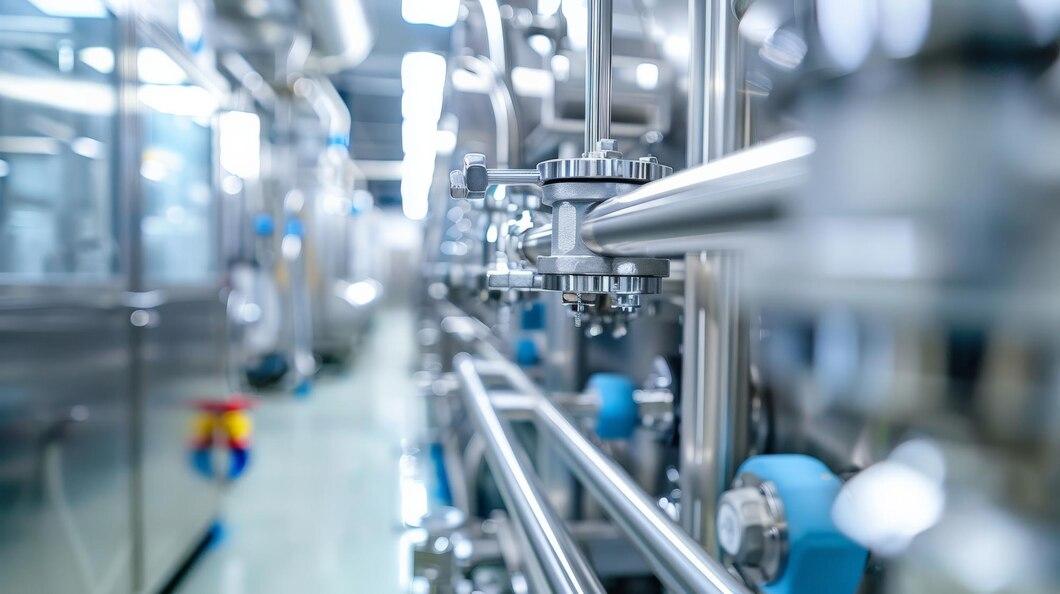The ultrasonic flowmeters market has undergone a remarkable evolution over the past few decades, driven by advancements in technology, increasing demand for accurate and non-intrusive measurement solutions, and the need for greater efficiency in industrial operations. These devices, which use ultrasonic waves to measure the flow of liquids and gases, have evolved from niche applications to becoming integral tools across various industries. This article explores the evolution of ultrasonic flowmeters, focusing on technological advancements, market growth, and the future outlook.
Early Development of Ultrasonic Flowmeters
The first ultrasonic flowmeters were developed in the 1960s as an alternative to traditional flow measurement devices such as mechanical and electromagnetic flowmeters. Early models were primarily used for specific applications in industries such as petrochemicals, water treatment, and power generation. These early ultrasonic flowmeters used the Doppler effect, where the frequency shift of ultrasonic waves was measured as they reflected off particles or bubbles within the flow.
However, the early ultrasonic meters had some limitations, including sensitivity to particle size and flow conditions. They were typically used for liquids with a certain level of suspended particles or bubbles. Their ability to measure the flow of clean fluids, such as pure water, was limited. Despite these challenges, ultrasonic flowmeters provided a significant advantage over traditional mechanical meters because they were non-intrusive and did not require direct contact with the fluid being measured, reducing maintenance costs and wear-and-tear issues.
Technological Advancements and the Rise of Transit-Time Technology
The 1980s and 1990s marked a period of significant advancements in ultrasonic flowmeter technology. The introduction of transit-time technology was a game-changer in the market. Unlike the Doppler method, which relied on particles or bubbles in the fluid, transit-time ultrasonic flowmeters measure the time it takes for ultrasonic signals to travel along the flow path. By comparing the time difference between signals traveling upstream and downstream, transit-time flowmeters could accurately calculate the flow velocity of clean fluids, such as water and oil.
This technological breakthrough opened up new possibilities for ultrasonic flowmeters, allowing them to be used in a wider range of applications, including measuring clean liquids and gases. The development of multi-path transit-time flowmeters, which use multiple ultrasonic paths to improve measurement accuracy, further enhanced the precision of flow measurement. As the technology improved, ultrasonic flowmeters became more reliable, with better calibration and reduced susceptibility to external noise and flow disturbances.
Expansion into Diverse Industries
As ultrasonic flowmeters became more accurate and versatile, their adoption expanded beyond traditional applications in water treatment, oil and gas, and power generation. The 2000s saw the market for ultrasonic flowmeters broaden significantly, with industries such as chemicals, pharmaceuticals, food and beverage, HVAC, and automotive beginning to embrace the technology.
In the chemical and pharmaceutical industries, the need for accurate and non-invasive flow measurement solutions drove the demand for ultrasonic flowmeters. These industries often deal with corrosive or hazardous liquids, where traditional meters could pose risks of contamination or damage. Ultrasonic flowmeters, with their ability to operate without direct contact with the fluid, offered a safe and reliable solution.
In the food and beverage industry, where hygiene and product quality are paramount, ultrasonic flowmeters found applications in measuring the flow of liquids such as milk, juices, and soft drinks. Their non-intrusive nature ensured that the products remained uncontaminated, and their accuracy allowed manufacturers to optimize production processes and reduce waste.

Integration of Digital Technologies and IoT
The most recent phase in the evolution of ultrasonic flowmeters has been the integration of digital technologies, including Internet of Things (IoT) connectivity and advanced data analytics. The introduction of smart ultrasonic flowmeters with wireless communication capabilities has enabled real-time monitoring of flow data. This has provided industries with enhanced control over their operations, offering predictive maintenance capabilities and the ability to remotely monitor systems to reduce downtime.
The use of IoT and cloud-based platforms has made it possible for companies to collect and analyze large volumes of flow data, leading to more informed decision-making. This digital transformation has also improved operational efficiency, as companies can detect and address issues before they result in system failures or performance degradation. Furthermore, the incorporation of artificial intelligence (AI) and machine learning algorithms into ultrasonic flowmeter systems has enabled automated diagnostics and better flow prediction, reducing the need for manual intervention.
Market Growth and Future Outlook
The ultrasonic flowmeter market has experienced rapid growth in recent years and is expected to continue its upward trajectory. Key drivers of market growth include the increasing adoption of non-invasive measurement technologies, the need for greater energy efficiency, and the rising demand for accurate flow measurement in various industries. Additionally, the growing emphasis on sustainability and regulatory compliance is further propelling the demand for reliable and efficient flow measurement solutions.
The market is also seeing significant investment in research and development (R&D) to improve the performance of ultrasonic flowmeters. Innovations such as multi-path ultrasonic flow measurement, portable clamp-on meters, and more robust sensors are likely to fuel the market's expansion in the coming years. The emergence of new applications, particularly in renewable energy, smart cities, and water conservation, will further drive the demand for advanced ultrasonic flowmeter solutions.
Conclusion
The ultrasonic flowmeter market has evolved from a niche technology into a critical measurement tool across a wide range of industries. Advancements in ultrasonic measurement technology, including the introduction of transit-time and multi-path methods, have enabled these devices to become more accurate, versatile, and cost-effective. As industries continue to seek more efficient, non-invasive, and reliable measurement solutions, the ultrasonic flowmeter market is poised for further growth. With ongoing technological advancements and increasing adoption of smart technologies, the future of ultrasonic flowmeters looks bright, offering even more opportunities for innovation and market expansion.


